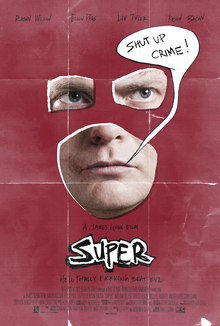The phenomenon of quantum interference stands as one of the most striking manifestations of quantum mechanics, exemplified vividly through the operation of a super quantum interference device. These devices serve as remarkable constructs that harness the principles of quantum superposition and entanglement to elicit interference effects that challenge classical intuitions about determinism, locality, and the behavior of particles. Understanding what constitutes a super quantum interference device necessitates delving into the foundational principles of quantum mechanics, this device’s operational framework, and its implications across various domains of physics.
At the core of a super quantum interference device lies the principle of superposition, a foundational tenet of quantum mechanics positing that particles can exist simultaneously in multiple states. This principle allows quantum states to combine, leading to a scenario whereby probability amplitudes interfere, yielding observable consequences that challenge classical interpretations. The archetypal example is the double-slit experiment, wherein particles such as electrons display wave-like behavior, leading to a distribution pattern that suggests the superposition of paths taken by the particles. In a super quantum interference device, this effect is magnified through quantum coherence, enabling the exploration of phenomena typically obscured in classical systems.
One of the most renowned embodiments of a super quantum interference device is the superconducting quantum interference device, commonly referred to as a SQUID. The SQUID operates on the principles of superconductivity and Josephson tunneling, featuring two superconducting junctions separated by a thin insulating barrier. This configuration enables the device to detect minute magnetic flux changes through the interference of quantum states. The ability of a SQUID to measure magnetic fields with extreme sensitivity renders it invaluable in a plethora of applications ranging from medical imaging techniques, such as magnetoencephalography, to the burgeoning field of quantum computing.
The operational mechanics of a SQUID encapsulate the essence of quantum interference. By applying an external magnetic field, the quantum phase of the macroscopic wave function of Cooper pairs—paired electrons that enable superconductivity—is altered. This change prompts a shift in the interference pattern, directly observable as variations in the voltage across the junctions. Such sensitivity to external perturbations epitomizes the utility of super quantum interference devices: they act as precise sensors within the quantum realm, offering insights into phenomena that would otherwise remain inaccessible.
The dexterity of super quantum interference devices is not confined solely to measurement. They also present opportunities for the manifestation of novel quantum states and phenomena. For instance, recent advancements in quantum technology employ interferometric methodologies to execute quantum information processing tasks. Quantum computation benefits from the intricacies of quantum interference, where the manipulation of qubits—a fundamental unit of quantum information—shows promise through the application of superposition and entanglement made possible by devices like the SQUID.
Moreover, the exploration of topological insulators has opened new avenues in the understanding of super quantum interference. Topological insulators exhibit unique electronic properties that are robust against perturbations due to their topological nature. When interfaced with super quantum interference devices, these materials can facilitate novel quantum states characterized by Majorana fermions, elusive quasiparticles critical for fault-tolerant quantum computation. The realization of such states, governed by the principles of superposition and interference, illustrates the exciting interconnectivity of quantum mechanics and materials science.
While super quantum interference devices provide essential insights into quantum phenomena, they also provoke philosophical inquiries regarding the nature of reality itself. The implications of quantum superposition challenge conventional notions of reality and individuality. The instantaneous change in the state of a system due to measurement, as illustrated by the observer effect, prompts contemplation on the role of observation in shaping reality. Furthermore, the non-locality of quantum mechanics, which allows instantaneous correlations between entangled particles, invites dialogue concerning the interconnectedness of systems across vast distances.
The fascination surrounding super quantum interference devices therefore extends beyond their technical capabilities. It invites scholars, physicists, and enthusiasts alike to explore not merely how these devices operate, but also what they reveal about the underlying fabric of the universe. In essence, the study of super quantum interference devices embodies the confluence of practical applications and profound philosophical inquiries, positioning them as focal points in the ongoing dialogue about the nature of existence.
As scholars continue to unravel the complexities of quantum mechanics, the role of super quantum interference devices will only amplify in significance. Ongoing research strives to optimize their performance, widen their applicability, and deepen our understanding of quantum materials. Each technological advancement signals not just a leap in scientific knowledge, but also a richer comprehension of the universe’s underlying principles.
In conclusion, the exploration of super quantum interference devices encompasses a vast landscape of scientific inquiry that traverses disciplinary boundaries and philosophical musings. Their ability to exploit quantum mechanics’ intricacies reveals a dynamic interplay of art and science, driving progress in various fields from foundational physics to advanced technological applications. As we stand on the precipice of a new era of quantum technology, the insights gained from these devices will undoubtedly illuminate the complexities of the quantum world and redefine our understanding of reality.












